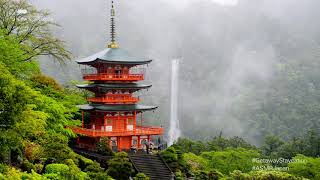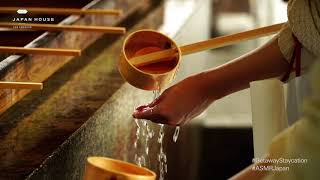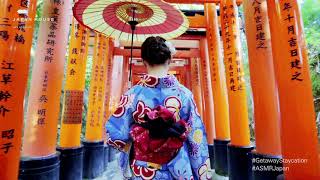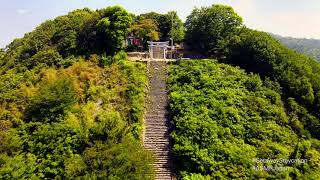
Roaring Nachi Falls & Seiganto-ji Temple
As extraordinary testaments to the harmonious balance between nature and the man-made, Nachi Falls and Seiganto-ji Temple are two of the most renowned attractions in Wakayama Prefecture, also known as the spiritual heartland of Japan. Nachi Falls, the tallest vertical drop waterfall in Japan, has long been venerated as a religious site due to its raw natural beauty, attracting Shinto and Buddhist worshippers alike who made daily offerings to the waterfall. At its forefront, Seiganto-ji Temple, with its bright red three-story pagoda structure, is in stark contrast to the natural environment and serves as a Buddhist temple that has the rare distinction of standing alongside the adjacent Shintoist Kumano Nachi Taisha Shrine complex, highlighting the duality of Japanese spiritualism.

Purifying Ritual at a Shrine
There are approximately 80,000 Shinto shrines in Japan, of which about 1,800 are in Tokyo. At all Shinto shrines, visitors will first stop at the temizuya, a washing station where clean running water allows worshippers to wash their hands and rinse their mouths in an act of traditional ritual purification before entering the shrine and approaching the deity (kami) housed within.
The entire process can be done with a single dipperful of water. First, take the dipper with your right hand and scoop water from the basin and pour a small amount over your left hand. Next, switch the dipper to your left hand and pour water over your right hand. Then, with your right hand, pour water into the palm of your left hand and bring your hand to your mouth to rinse (never touch the ladle directly to your mouth). Spit the water beside the fountain and turn the dipper upright so the remaining water runs down the handle. Return the empty dipper to its place.

Visiting a Shrine
Shinto shrines are located throughout Japan, from the busiest metropolitan cities to deep within the quietest stretches of forest, serving as a place for worship as well as dwellings for kami, the Shinto gods. Shrine visitation, or sampai, is an important facet of Japanese spiritual life, where worshippers can offer a prayer to the kami in the hopes of achieving personal desires (such as passing an exam or finding happiness), practicing traditional religious ceremonies during the New Years’ period, or finding healing and spiritual restoration in troubled times.
Fushimi Inari Taisha, located in Kyoto Prefecture, is the most important shrine dedicated to Inari, the Shinto god of rice, good harvest, and success in business. As the head of all Japan’s Inari shrines, Fushimi Inari is known for its vibrant orange torii gates (Senbon Torii) that number more than a thousand, spiraling up to Mt. Inari and leading to the inner shrine.

Takaya Shrine in the Summer
Known as “the torii gates to the sky,” Takaya Shrine sits at 407 meters atop Mt. Inazumi in the city of Kanonji, Kagawa Prefecture, located in the north of Shikoku island. Takaya Shrine, believed to house a god of abundant rice harvests, offers a panoramic view of the city below and the Seto Inland Sea, making the shrine an ideal location for capturing breathtaking sights or the perfect landscape photo. To the north, Naoshima Island is the site of internationally renowned modern art pieces, such as Yayoi Kusama’s Yellow Pumpkin and Red Pumpkin, and Sou Fujimoto’s Naoshima Pavilion.

